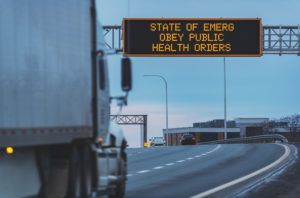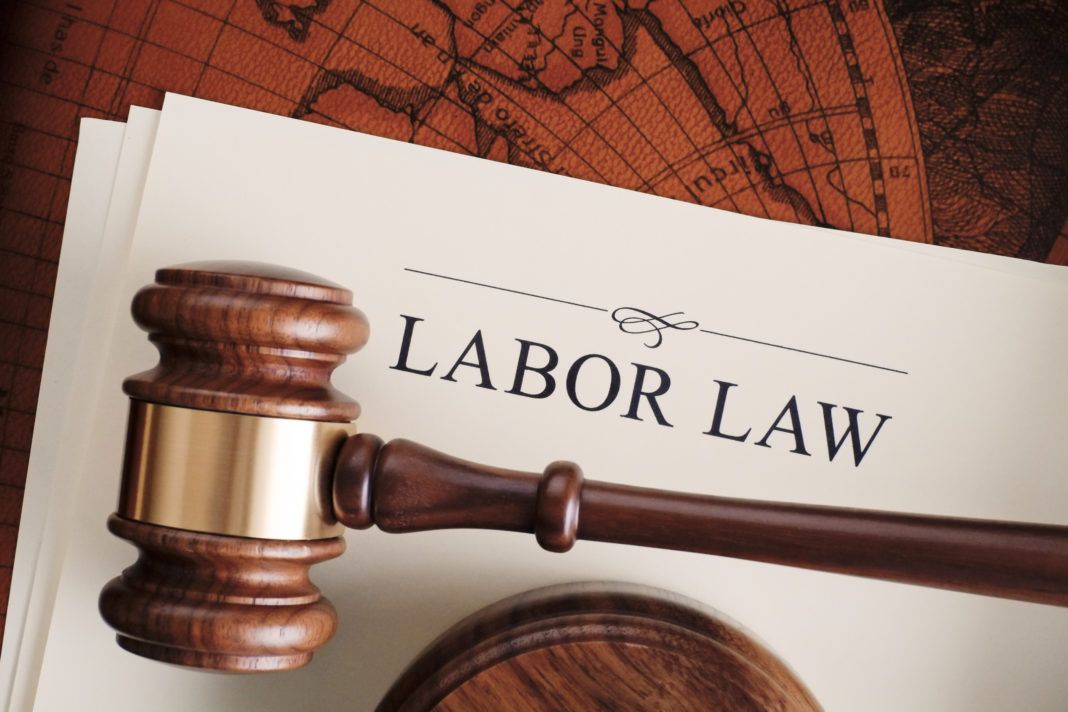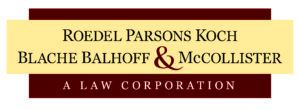Sponsored by
General Labor and Employment Law
This section addresses general labor and employment law issues and the impact of COVID-19.
Can my business discharge an employee for reasons other than those covered by the FFCRA?
Generally speaking, yes. Under Louisiana law, the default rule is that every employment relationship is “at will.” This means that the employment is terminable at the will of either party at any time. The governor’s proclamations do not modify this rule. There are, however, some important exceptions. Termination cannot violate the constitutional rights of the employee or a specific statute. At-will employment can also be modified by a contractual agreement to work for a definite period of time. If such an agreement exists, then the employer must have “cause” to terminate the employment before the expiration of the term.
Source: La. Civ. Code art 2747.
What are my obligations with respect to wages upon termination of employment?
Under Louisiana law, when an employee is discharged or voluntarily quits, amounts due under the terms of employment must be paid by the next regular pay day or within 15 days, whichever is sooner. “Terms of employment” includes more than just regular wages. It also includes vested vacation pay, earned commissions, bonuses, and bargained-for benefits under a collective bargaining agreement.
Payment must be made in the place and manner in which it has been customarily paid during the employment. Because many places of businesses, however, are temporarily closed or operating during reduced hours, payment can also be made via U.S. mail.
Source: La. R.S. 23:631.
 Can my business require employees to use vacation time or paid time off (“PTO”) if my business is closed due to the Stay-at-Home Order?
Can my business require employees to use vacation time or paid time off (“PTO”) if my business is closed due to the Stay-at-Home Order?
Generally, yes, provided it is consistent with your business’s established policy or employment contract. In the absence of state law to the contrary, employers may require the use of vacation time or PTO and restrict its use. Where an employer offers a bona fide benefits plan or vacation time to its employees, there is no prohibition on an employer requiring that such accrued leave or vacation time be taken on a specific day(s). That said, however, please read the section below on the new Families First Coronavirus Response Act, which restricts employers’ ability to require employees qualifying for relief under the Act to forego vacation time or PTO.
Sources: Can We Require an Employee to Use Paid Time Off (PTO) If He or She Hasn’t Requested it? Can We Limit When an Employee Can Use PTO?, SHRM; COVID-19 and the Fair Labor Standards Act Questions and Answers, U.S. DEP’T LAB.
Fair Labor Standards Act
The DOL has issued the following guidance concerning the impact of COVID-19 on the FLSA:
My business has a shortage of workers due to COVID-19.
Can my business use unpaid ‘volunteers’ to help out?
Generally speaking, no. The FLSA has stringent requirements with respect to the use of volunteers. In general, covered, nonexempt workers working for private, for-profit employers have to be paid at least the minimum wage and cannot volunteer their services.
How many hours is an employer obligated to pay an hourly-paid employee who works a partial week because the employer’s business closed?
The FLSA generally applies to hours actually worked. It does not require employers who are unable to provide work to non-exempt employees to pay them for hours the employees would have otherwise worked.
What are an employer’s obligations to an employee who is under
government-imposed quarantine?
The Wage and Hour Division of the DOL encourages employers to be accommodating and flexible with workers impacted by government-imposed quarantines. For example, employers may offer alternative work arrangements, such as teleworking and additional paid time off.
Can my business require an employee to perform work
outside of the employee’s job description?
Yes. The FLA does not limit the types of work employees age 18 or older may be required to perform.
 Can an employer encourage or require employees to telework (i.e., work from an alternative location such as home) as an infection-control strategy?
Can an employer encourage or require employees to telework (i.e., work from an alternative location such as home) as an infection-control strategy?
Yes. An employer may encourage or require employees to telework as an infection- control or prevention strategy. Telework may also be a reasonable accommodation. However, an employer cannot single out employees either to telework or to continue reporting to the workplace on a basis prohibited by any of the equal employment opportunity laws.
Do employers have to pay employees their same hourly rate
or salary if they work at home?
If telework is being provided as a reasonable accommodation for a qualified individual with a disability, or if required by an employment or union contract, then yes. Otherwise:
If this is not the case and you do not have a union contract or other employment contracts, under the FLSA employers generally have to pay employees only for the hours they actually work, whether at home or at the employer’s office. However, the FLSA requires employers to pay non-exempt workers at least the minimum wage for all hours worked, and at least time and one half the regular rate of pay for hours worked in excess of 40 in a workweek. Salaried exempt employees generally must receive their full salary in any week in which they perform any work, subject to certain very limited exceptions.
If the government bars employees from working from their current place of business and requires them to work from home, will employers have to pay
those employees who are unable to work from home?
Under the FLSA, employees generally only have to pay employees for the hours they actually work, whether at home or from the employer’s office. However, employers must pay at least the minimum wage for all hours worked, and at least time and one half the regular rate of pay for hours worked in excess of 40 in a single workweek. Salaried exempt employees must receive their full salary in any week in which they perform any work, subject to certain exceptions.
Source: COVID-19 and the Fair Labor Standards Act Questions and Answers, U.S. DEP’T LAB.
Families First Coronavirus Response Act
The FFCRA entails a significant expansion to the Family and Medical Leave Act (“FMLA”) for coronavirus-related reasons. Here’s a breakdown of what the FFCRA provides for small- and medium-sized businesses.
On March 18, 2020, the FFCRA became law, known as Public Law No. 116-127. The FFCRA becomes effective 15 days after enactment, or on April 2, 2020, and terminates on December 31, 2020. On March 20, 2020, the Internal Revenue Service (“IRS”), the U.S. Department of the Treasury (“Treasury”), and the U.S. Department of Labor (“DOL”) provided some preliminary guidance on the recently-enacted FFCRA, which amends and fundamentally expands the FMLA for small- and medium-sized businesses, defined as businesses with fewer than 500 employees. The IRS, Treasury, and DOL did this through IRS Notice IR-2020-57 (“Notice”). You can read the Notice and access additional information by clicking on this link to the IRS website. You can also read the full text of the FFRCA at this link.
The FFCRA applies to small and medium-sized businesses, defined as all American businesses or tax-exempt organizations with fewer than 500 employees that are required to provide emergency paid sick leave and emergency paid family and medical leave under the Act. The Act affords employees up to 80 hours of paid sick leave and expanded paid childcare leave when the employee’s children’s schools are closed, or childcare providers are unavailable, due to COVID-19. The Act also creates a refundable paid sick leave credit and paid childcare credit for eligible employers, as well as a break from payroll tax liability.
Here are some key takeaways from the Notice and the new FFCRA:
Does the FFCRA authorize paid sick leave for workers?
The FFCRA provides employees with paid leave either for the employee’s own health needs or to care for family members. More specifically:
» To be “quarantined” within the meaning of the FFCRA means the employee or other person is subject to a Federal, State, or local quarantine or isolation order related to COVID-19, or has been advised by a health care provider to self- quarantine due to concerns related to COVID-19;
» Full-time employees are entitled to paid sick leave for up to 80 hours at 100% of the employee’s pay where the employee is unable to work (or telework) because the employee requires sick leave due to that employee being quarantined or experiencing COVID-19 symptoms and seeking a medical diagnosis, and are entitled to sick leave for up to 80 hours at 2/3 of the employee’s pay if the employee is unable to work (or telework) because the employee requires sick leave due to that employee having to care for an individual who is quarantined, and/or to care for the employee’s child or children whose school is closed or the childcare provider is unavailable as a result of COVID-19, and/or the employee is experiencing any other substantially similar condition specified by the U.S. Secretary of HHS;
» Part-time employees are also entitled to either 100% of the employee’s pay or
2/3 of the employee’s pay, depending on the purpose for the leave, same as a full-
time employee, but, instead of 80 hours of pay, the part-time employee’s pay is
determined by the number of hours that such employee works, on average, over
a two-week period;
» There are caps on the amount of paid sick leave employers must pay to full- and part-time employees, including $511.00 per day and $5,110.00 in the aggregate for paid sick leave for certain purposes (i.e., an employee that is quarantined or experiencing COVID-19 symptoms and seeking a medical diagnosis), and $200.00 per day and $2,000 in the aggregate for paid sick leave for other qualifying purposes (i.e., an employee caring for an individual who is quarantined, and/or for the employee’s child or children whose school is closed or the childcare provider is unavailable due to COVID-19, and/or experiencing any other substantially similar condition specified by the U.S. Secretary of HHS);
In addition, employees may, in some instances, be entitled to an additional 10 weeks of expanded paid family and medical leave (which differs from paid sick leave) at 2/3 the employee’s pay if the employee is unable to work due to a need to care for a child whose school is closed or childcare provider is unavailable for reasons related to COVID-19, but this pay is capped at $200.00 per day and $10,000 in the aggregate;
» It does not matter how long the employee has been employed by the employer; the employee is entitled to paid sick leave for immediate use, however, in order to be entitled to the enhanced family and medical leave, the employee must have been employed by the employer for 30 calendar days prior to requesting leave; and,
» The Secretary of the DOL shall make publicly available within seven days of the enactment of the FFCRA a model notice required to be posted in conspicuous places on the employer’s premises regarding the requirements described in the FFCRA.
What does the FFCRA provide to help employers?
Enforcement and Penalties
First, a word of caution. Employers may not require an employee to use other paid leave provided by the employer to the employee before the employee uses the paid sick leave under the FFCRA. Nor may employers discharge, discipline or discriminate against an employee who takes leave in accordance with the FFCRA. Finally, employers found in violation of the FFCRA will be subject to the penalties and enforcement described in the Fair Labor Standards Act and the Family and Medical Leave Act. However, the DOL will observe a temporary period of non-enforcement for the first 30 days after the Act takes effect, so long as the employer has acted reasonably and in good faith to comply with the Act.
Reimbursement
Employers may receive reimbursement for paid leave pursuant to the FFCRA. More specifically:
» Employers may receive a refundable credit for sick leave at the employee’s regular rate of pay, up to $511.00 per day and $5,110.00 in the aggregate for a total of 10 days per quarter, for an employee who is unable to work because of COVID-19 quarantine or self-quarantine or who has COVID-19 symptoms and is seeking a medical diagnosis;
» Employers also receive a credit for sick leave for at 2/3 of the employee’s regular rate of pay, up to $200.00 per day and $2,000 in the aggregate for up to 10 days per quarter, for an employee who is caring for an individual who is quarantined, and/or for the employee’s child or children whose school is closed or the childcare provider is unavailable due to COVID-19, and/or experiencing any other substantially similar condition specified by the U.S. Secretary of HHS;
» Employers further receive, in addition to the sick leave credit, a refundable family and medical leave credit at 2/3 of the employee’s regular rate of pay, up to $200.00 per day and $10,000 in the aggregate, for an employee who is caring for a child because the child’s school or childcare facility is closed, or the childcare provider is unavailable due to COVID-19, and up to 10 weeks of qualifying leave can be counted towards the childcare leave credit; and
» Employers are further entitled to an additional tax credit determined based on costs to maintain health insurance coverage for the eligible employee during the leave period.
Tax Relief
Employers also will be able to obtain tax relief for 100% of the amounts of qualifying sick and family and medical leave that they paid. More specifically:
» Employers also will be able to retain the amount of payroll taxes equal to the amount of qualifying sick and family and medical leave that they paid, rather than depositing such amounts with the IRS;
» The payroll taxes that are available for such retention include withheld federal income taxes, the employee share of Social Security and Medicare taxes, and the employer share of Social Security and Medicare taxes with respect to all employees;
» If there are not sufficient payroll taxes to cover the cost of providing qualified sick and childcare leave paid, employers will be allowed to file a request for an accelerated payment from the IRS, which should be processed in two weeks or less; and
» Employers will be able to claim the paid sick leave and paid childcare leave credits for qualifying leave that they provide to employees between the effective date of the FFCRA (April 2, 2020) and December 31, 2020.
Does the FFCRA offer any relief from its requirements for small businesses?
In cases where the viability of the business is threatened, employers with fewer than 50 employees are eligible for an exemption from the requirement to provide leave to an employee in order to care for a child whose school is closed, or childcare is unavailable. Additionally, employers that employ health care providers or emergency responders may elect to exclude such employees from the coverage of the FFCRA.
More extensive guidance will be issued in the coming days.
DOL and IRS provide rule and guidance on
the Families First Coronavirus Response Act
Since our firm published our initial Small Business Toolkit and guide to the FFCRA, the United States Department of Labor (“DOL”) and the IRS have published several rounds of guidance to assist employers in interpreting the dense and not-easily-understood FFCRA. Additionally, on April 6, 2020 the DOL published a temporary rule which goes further in interpreting and explaining the FFCRA to employers. Below is a summary of the new DOL rule and other guidance from the IRS.
New Department of Labor Temporary Rule
On April 6, 2020 the DOL published a temporary rule at 29 CFR 826 interpreting and making operational the FFCRA. The DOL issued the rule without prior notice and opportunity for comment subject to the “good cause” exception found in the Administrative Procedure Act at 5 USC 553(b)(B). Nonetheless, even as a temporary rule issued without notice and comment, the rule has the effect of law. Highlighted below are the most important points of clarity provided by the new DOL rule.
Clarity on the definition of certain words and phrases
First, the rule provides clarity on the definition of certain words and phrases as used in the Act, summarized below:
“Son or Daughter”
The rule clarifies the ambiguity created by the FFCRA as to whether the phrase “son or daughter” included children over the age of 18 that cannot care for themselves due to mental or physical disability. The text of the FFCRA implies that anyone over the age of 18 cannot qualify as a “son or daughter” for purposes of the expanded FMLA caretaker leave. However, the DOL rule clarifies such persons are covered by the expanded caretaker provisions of the FFCRA, just like they would be under the FMLA.
“telework”
The rule clarified that employers are not required to compensate employees for unreported hours worked while teleworking for COVID-19 related reasons, unless the employer knew or should have known about such telework.
Get more about this topic and other comprehensive information in the
‘COVID-19 Toolkit for Small- and Medium-Sized Businesses’ from Roedel Parsons here.
Clarity on whether employees under a stay-at-home
mandate may request paid leave
The FFCRA creates six qualifying reasons related to COVID-19 for which an employee may request paid leave. The first of these reasons is for when an employee is unable to work because he or she is subject to a Federal, State, or local COVID-19 quarantine or isolation order. The question and ambiguity that has arisen is whether certain employees under various “stay-at-home” mandates qualify as persons eligible for paid leave under this the first FFCRA qualifying reason.
The DOL’s response is as follows:
“An employee subject to one of these orders may not take paid sick leave where the employer does not have work for the employee. This is because the employee would be unable to work even if he or she were not required to comply with the quarantine or isolation order. For example, if a coffee shop closes temporarily or indefinitely due to a downturn in business related to COVID-19, it would no longer have any work for its employees. A cashier previously employed at the coffee shop who is subject to a stay-at-home order would not be able to work even if he were not required to stay at home. As such, he may not take paid sick leave because his inability to work is not due to his need to comply with the stay-at-home order, but rather due to the closure of his place of employment.”
Further, the rule clarifies that teleworking employees will generally not be eligible for paid leave under the FFCRA. Specifically, where an employer (1) has work for an employee to do, (2) permits the employee to work from home, and (3) there are no extenuating reasons to prevent the employee from teleworking, such an employee cannot take paid leave. Put another way, the employee cannot both be getting paid for telework AND receiving paid leave benefits under the FFCRA.
Thus, in most instances where a business has shut down or reduced operations because of COVID-19, affected employees will not be eligible for paid leave under FFCRA. Such employees, of course, will still be eligible for state unemployment benefits.
Download the full “DOL Issues Temporary Rule and IRS Issues
Updated FAQ and Guidance on FFCRA” guide from Rodel Parsons here.
Clarity on eligibility for leave under the FFCRA for “Health Care Providers” and “Emergency Responders”
As background, the FFCRA provides that an employer may exclude employees who are health care providers or emergency responders from the paid leave requirements under the FFCRA. However, the Act failed to specifically define these terms as they relate to the exemption, leading to some confusion for healthcare employers.
Accordingly, the DOL has issued definitions for who qualifies as a “Health Care Provider” and an “Emergency Responder” for purposes of the FFCRA exemption.
 Health Care Provider
Health Care Provider
The definition for who qualifies as a health care provider is now extremely broad under the DOL rule. The rule defines a health care provider as:
anyone employed at any doctor’s office, hospital, health care center, clinic, post-secondary educational institution offering health care instruction, medical school, local health department or agency, nursing facility, retirement facility, nursing home, home health care provider, any facility that performs laboratory or medical testing, pharmacy, or any similar institution, Employer, or entity. This includes any permanent or temporary institution, facility, location, or site where medical services are provided that are similar to such institutions.
This definition includes any individual employed by an entity that contracts with any of these institutions described above to provide services or to maintain the operation of the facility where that individual’s services support the operation of the facility. This also includes anyone employed by any entity that provides medical services, produces medical products, or is otherwise involved in the making of COVID-19 related medical equipment, tests, drugs, vaccines, diagnostic vehicles, or treatments. This also includes any individual that the highest official of a State or territory, including the District of Columbia, determines is a health care provider necessary for that State’s or territory’s or the District of Columbia’s response to COVID-19.[1]
Emergency Responder
The rule for emergency responders is similarly broad:
[A]n emergency responder is anyone necessary for the provision of transport, care, healthcare, comfort and nutrition of such patients, or others needed for the response to COVID-19. This includes but is not limited to military or national guard, law enforcement officers, correctional institution personnel, fire fighters, emergency medical services personnel, physicians, nurses, public health personnel, emergency medical technicians, paramedics, emergency management personnel, 911 operators, child welfare workers and service providers, public works personnel, and persons with skills or training in operating specialized equipment or other skills needed to provide aid in a declared emergency, as well as individuals who work for such facilities employing these individuals and whose work is necessary to maintain the operation of the facility. This also includes any individual whom the highest official of a State or territory, including the District of Columbia, determines is an emergency responder necessary for that State’s or territory’s or the District of Columbia’s response to COVID-19.[2]
While these expanded definitions are unfortunate for health care workers who may have a legitimate need for paid leave, they offer health care employers on the front lines great flexibility in meeting the demands of the COVID-19 pandemic.
Finally, DOL “encourages employers to be judicious” when using the definitions of Health Care Provider and Emergency Responder to exempt such employees from the provisions of the FFCRA to minimize the spread of COVID-19.[3] This means employers should use common sense if they employ a Health Care Provider or Emergency Responder who becomes sick or shows symptoms of COVID-19 or whose presence at work may otherwise conflict with efforts to minimize the spread of COVID-19.
 Clarity on employer coverage for small businesses with less than 50 employees
Clarity on employer coverage for small businesses with less than 50 employees
The FFCRA also provides that employers with less than 50 employees may be exempt from the paid sick leave and expanded family leave requirements of the Act when complying with the Act would jeopardize the viability of the business as an ongoing concern.
The issue is that the Act did not set forth an objective criterion for when a small business with less than 50 employees was sufficiently “jeopardized” by COVID-19 to qualify for the exemption. To that end, the DOL’s new rule addresses this issue by explaining the conditions for when a business with less than 50 employees may refuse to comply with the FFCRA. Accordingly, one of the following three conditions must be met before such a small business can exempt itself from the paid leave requirements of FFCRA:
- If providing such leave would cause the small employer’s expenses and financial obligations to exceed available business revenue and cause the small employer to cease operating at a minimal capacity;
- If the absence of the employee or employees requesting such leave would pose a substantial risk to the financial health or operational capacity of the small employer because of their specialized skills, knowledge of the business, or responsibilities; or
- If the small employer cannot find enough other workers who are able, willing, and qualified, and who will be available at the time and place needed, to perform the labor or services the employee or employees requesting leave provide, and these labor or services are needed for the small employer to operate at a minimal capacity.
To view the full text of the new DOL rule, click here.
New IRS FAQ Guidance
 At the end of last month, the IRS also released updated guidance for employers regarding the tax credits available under FFCRA.
At the end of last month, the IRS also released updated guidance for employers regarding the tax credits available under FFCRA.
While this guidance is not easily summarized, the following is a brief attempt at addressing the most important questions employers may have about tax credits under the FFCRA.
For the full IRS Guidance and FAQ please click the following link here.
Overview
The FFCRA provides that employers subject to the Emergency Paid Sick Leave Act (“EPSLA”) and the Expanded FMLA paid leave requirements are entitled to receive a credit in the full amount of the qualified sick leave wages and qualified family leave wages, plus allocable qualified health plan expenses and the employer’s share of Medicare tax, paid for leave during the period beginning April 1, 2020, and ending December 31, 2020.
Below are some of the most important questions employers may have about the FFCRA tax credits:
What documentation must an eligible employer retain to substantiate eligibility to claim the tax credits?
Eligible Employers claiming the credits for qualified leave wages (and allocable qualified health plan expenses and the Eligible Employer’s share of Medicare taxes), must retain records and documentation related to and supporting each employee’s leave to substantiate the claim for the credits, and retain the Forms 941, Employer’s Quarterly Federal Tax Return, and 7200, Advance of Employer Credits Due To COVID-19, and any other applicable filings made to the IRS requesting the credit.
What information should an eligible employer receive from an employee and maintain to substantiate eligibility for the sick leave or family leave credits?
An Eligible Employer will substantiate eligibility for the sick leave or family leave credits if the employer receives a written request for such leave from the employee in which the employee provides:
- The employee’s name;
- The date or dates for which leave is requested;
- A statement of the COVID-19 related reason the employee is requesting leave and written support for such reason; and
- A statement that the employee is unable to work, including by means of telework, for such reason.
In the case of a leave request based on a quarantine order or self-quarantine advice, the statement from the employee should include the name of the governmental entity ordering quarantine or the name of the health care professional advising self-quarantine, and, if the person subject to quarantine or advised to self-quarantine is not the employee, that person’s name and relation to the employee.
In the case of a leave request based on a school closing or child care provider unavailability, the statement from the employee should include the name and age of the child (or children) to be cared for, the name of the school that has closed or place of care that is unavailable, and a representation that no other person will be providing care for the child during the period for which the employee is receiving family medical leave and, with respect to the employee’s inability to work or telework because of a need to provide care for a child older than fourteen during daylight hours, a statement that special circumstances exist requiring the employee to provide care. That said, it is unlikely that a husband and wife who are both under a stay-at-home order and who cannot telework will be able to fulfill the requirement of representing that there Is no other person who will be providing care for the child (or children).
Employers must retain the above-mentioned documentation for a minimum of four years after the later of the date the tax becomes due or is paid.
What is the amount of the refundable tax credits available to eligible employers?
The credits covers 100 percent of up to ten days of the qualified sick leave wages and up to ten weeks of the qualified family leave wages (and any qualified health plan expenses allocable to those wages) that an Eligible Employer paid during a calendar quarter, plus the amount of the Eligible Employer’s share of Medicare taxes imposed on those wages. Qualified sick leave and qualified family leave under the FFCRA are in addition to employees’ preexisting leave entitlements. See the Department of Labor’s Families First Coronavirus Response Act: Questions and Answers for rules regarding required FFCRA paid sick leave and expanded family and medical leave and other leave entitlements. Eligible Employers may only claim a credit for qualified leave wages.
How does an eligible employer claim the refundable tax credits for qualified leave wages (plus any allocable qualified health plan expenses and the amount of the eligible employer’s share of Medicare tax)?
Eligible Employers will report their total qualified leave wages and the related credits for each quarter on their federal employment tax returns, usually Form 941, Employer’s Quarterly Federal Tax Return. Form 941 is used to report income and social security and Medicare taxes withheld by the employer from employee wages, as well as the employer’s portion of social security and Medicare tax.
In anticipation of receiving the credits, Eligible Employers can fund qualified leave wages (and allocable qualified health plan expenses and the Eligible Employer’s share of Medicare tax on the qualified leave wages) by accessing federal employment taxes, including withheld taxes, that are required to be deposited with the IRS or by requesting an advance from the IRS.
Can an eligible employer required to pay qualified leave wages fund these payments before receiving the credits by reducing Its federal employment tax deposits?
An Eligible Employer may fund the qualified leave wages (and allocable qualified health plan expenses and the Eligible Employer’s share of Medicare tax on the qualified leave wages) by accessing federal employment taxes, including those that the Eligible Employer already withheld, that are set aside for deposit with the IRS, for other wage payments made during the same quarter as the qualified leave wages.
That is, an Eligible Employer that pays qualified leave wages to its employees in a calendar quarter before it is required to deposit federal employment taxes with the IRS for that quarter may reduce the amount of federal employment taxes it deposits for that quarter by the amount of the qualified leave wages (and allocable qualified health plan expenses and the Eligible Employer’s share of Medicare tax on the qualified leave wages) paid in that calendar quarter. The Eligible Employer must account for the reduction in deposits on the Form 941, Employer’s Quarterly Federal Tax Return, for the quarter.
How long are the refundable tax credits for qualified leave wages available?
The credits for Eligible Employers for qualified leave wages apply to wages paid with respect to the period of April 1, 2020, through December 31, 2020.
May a tax-exempt employer receive the credits?
Yes. The FFCRA entitles Eligible Employers that pay qualified sick leave wages and qualified family leave wages to refundable tax credits. Qualified sick leave wages and qualified family leave wages are those wages for paid sick leave and paid family and medical leave that are required to be paid under the FFCRA. Tax-exempt organizations that are required to provide such paid sick leave or expanded paid family and medical leave may claim the tax credits.
Important Links
- To access the entire text of the DOL’s new Rule on the FFCRA, click
- To access the DOL’s FAQ on the FFCRA, click
- To access the IRS’s full FAQ on the FFCRA click
Disclaimer
The information provided in this article does not, and is not intended to, constitute legal advice. All information, content, and materials available in this article are for general informational purposes only. Information in this article may not constitute the most up-to-date legal or other information.
This article contains links to third-party websites. Such links are only for the convenience of the reader. Roedel Parsons does not recommend or endorse the contents of such third-party websites.
You should consult an attorney for advice regarding your individual situation. Contacting us does not create an attorney–client relationship. Please do not send any confidential information to us until such time as an attorney–client relationship has been established.
[1] 29 CFR 826.30(c)(1)(i) and (ii).
[2] 29 CFR 826.30(c)(2)(i).
[3] 85 Fed.Reg. 19326, at 19334.
Baton Rouge Office | 8440 Jefferson Highway | Suite 301
Baton Rouge, LA 70809 | Phone: (225) 929-7033 | Fax: (225) 928-4925
Attorneys: Luke Piontek | Bradley Guin | Daniel Price
New Orleans Office | 1515 Poydras Street | Suite 2330
New Orleans, LA 70112 | Phone: (504) 566-1801 | Fax: (504) 565-5626
Attorneys: Wayne Fontana | Chuck Pisano | Skye Fantaci
 GET DAILY REPORT FREE
GET DAILY REPORT FREE












